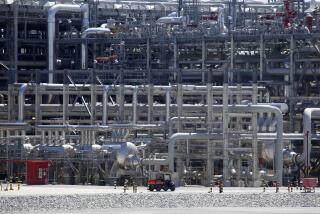What Energy Policy?
Secretary of the Interior Donald P. Hodel boasted recently about how well the Administration’s mythical energy policy is working, just one day after figures released by his agency demonstrated how dramatically the non-policy is not working. Confusing? No wonder. Even when it’s possible to detect an Administration energy policy, it is difficult to give it any credibility.
The Interior Department announced that oil companies had submitted $118.6 million in bonus bids for the right to lease prospective oil tracts in the Beaufort Sea off the North Coast of Alaska. In a press release, the department gushed: “We are very pleased with the tremendous interest shown in this sale.”
The following week’s issue of Oil and Gas Journal had a decidedly different view of the bidding, however: “Sale 97 off Alaska last week yielded the poorest showing in apparent high bids of any U.S. Beaufort Sea federal sale to date.” The low interest was a reflection of the depressed oil market and the high cost of drilling and operating in the frozen north waters.
For all the Administration talk about the need for energy security, the Administration’s free-market policies have not gotten the nation any more oil in recent years. U.S. oil production fell 4.4% during 1987 to an average 8.3 million barrels per day. This year’s production is expected to be the lowest since 1977, when Alaska’s Prudhoe Bay came on line. Drilling rig activity was at a modern low last year.
Still, Hodel told oilmen the day after the Beaufort Sea announcement that the Administration’s energy policy is working and that it would be a mistake to abandon it. Hodel defined the policy as two strategies: one, to minimize federal intervention and control in the marketplace and, two, to seek a balanced and mixed energy supply. The result is supposed to be an adequate supply of energy at a reasonable cost.
In fact, the policy is not balanced at all, even when confined merely to the realm of domestic oil exploration and production. There, the policy rests primarily on Hodel’s crusade to drill for oil off the California coast and in the Arctic National Wildlife Refuge, two of the most environmentally sensitive areas one could find. Hodel has focused on those regions even though the odds are strongly against the Administration achieving any energy victory in either before it leaves office.
Hodel said neither the energy industry nor the public wants a return to the “failed policies of the past.” In fact, important segments of the petroleum industry do want the federal government to intervene in ways that would make exploration more attractive.
If anyone doubts Hodel, the President himself has offered “proof” that his policy is working. In his new budget, the President says the nation is using no more energy--and less oil--than it was 10 years ago in spite of great economic expansion. The primary reason has nothing to do with Administration policy. The statistic results from conservation and more efficient use of oil--much of it because of federally mandated fuel-economy standards in automobiles. It seems the “failed policies of the past” are still paying dividends.
More to Read
Sign up for Essential California
The most important California stories and recommendations in your inbox every morning.
You may occasionally receive promotional content from the Los Angeles Times.










